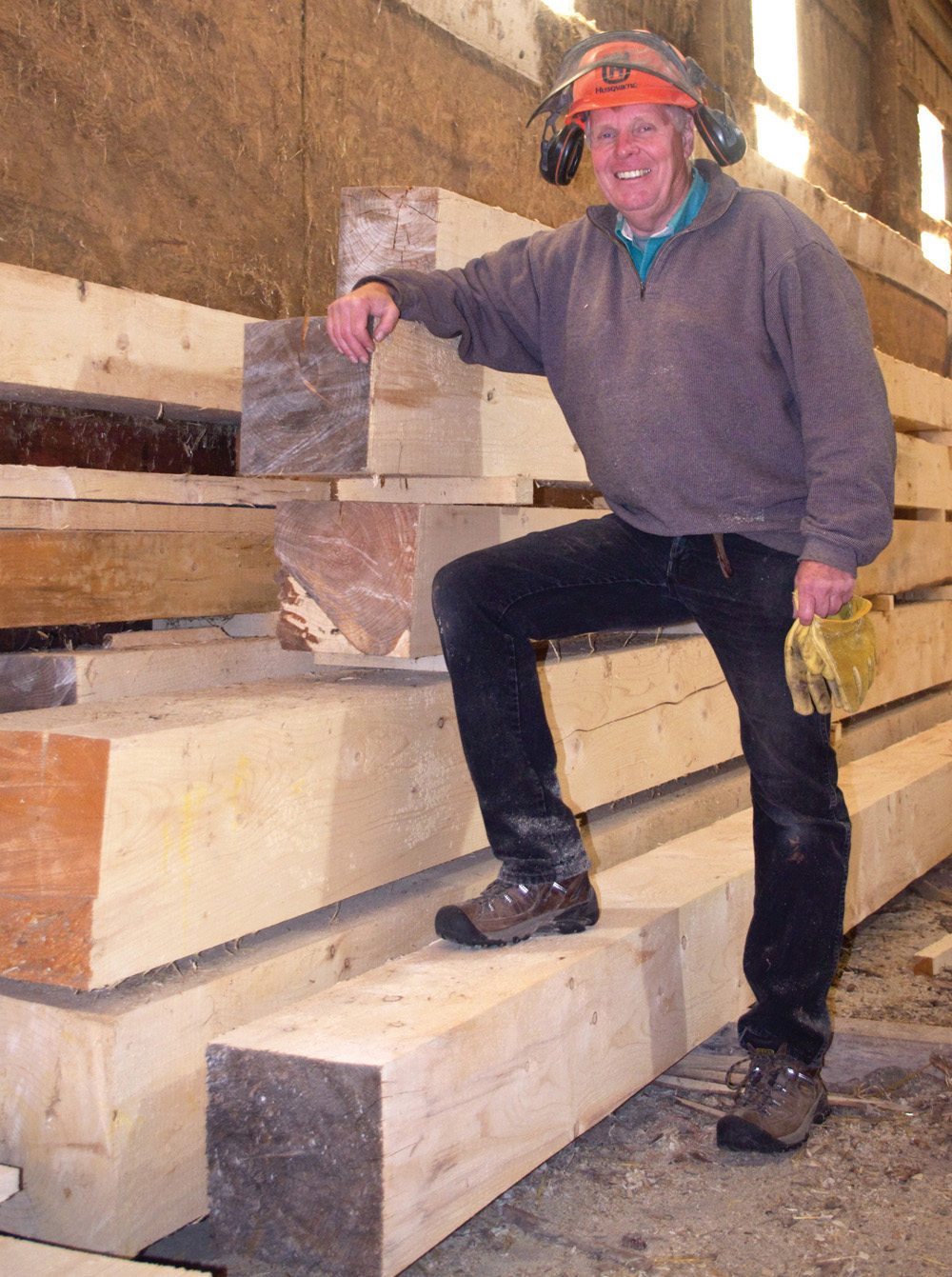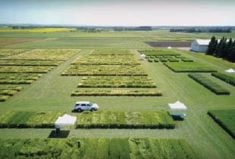Cruise the countryside in certain parts of Alberta, and there are bright-yellow signs stapled to power poles advertising that someone is ‘Looking For Wood.’
After reading what Caroline-area farmer Will Vohs has discovered, landowners may want to think twice before signing over their woodlots too quickly.
That’s because Vohs says he can manufacture a 12-inch by 12-inch by 20-foot timber on his band sawmill and sell it for about $250 compared to the $50 to $100 per raw log that forest companies wanted to pay him 10 years ago. And raw log prices have gone down since then, he said.
Read Also

Farming Smarter receives financial boost from Alberta government for potato research
Farming Smarter near Lethbridge got a boost to its research equipment, thanks to the Alberta government’s increase in funding for research associations.
The idea to custom cut his own wood products occurred to Vohs when he agreed to sell some standing timber to a forest company to raise some cash. He and his family purchased 2-1/2 sections about a half-hour west of Innisfail after immigrating to Canada in the 1970s.
In Europe, private forests are highly valued and Vohs recognized the value of the woodlot on their new home — which they named Valley of Hope Farm. While most of their land was converted to pasture, they left a half section as a woodlot.
Over the years, they developed a successful cattle business. But Vohs encountered a series of unfortunate circumstances involving drought and one of their cows being diagnosed with BSE in 2003. He and his partners decided to wind down their 130-head, pure Charolais cattle herd in 2005.
That gave him time to try something new, which turned out to be custom raising cattle for neighbours and custom sawmilling timbers and lumber for himself, neighbours, and a network of customers who discovered him through word of mouth.
“Being here 40 years, I realized that stuff falls apart,” said Vohs. “So you need to buy lumber to fix it or you can cut your own lumber to fix it. Being that I already had a tractor to pull logs out of the bush, I already had a Bobcat to put logs on my sawmill, and a chainsaw — all I was missing was the sawmill.”
Vohs carefully harvests about 50 spruce and aspen trees annually, with each measuring at least 16 inches at the butt (and some up to 30 inches). Typically, he falls the trees and transports them to his band sawmill, which is set up in an enclosure that also serves as shelter to protect his sawn lumber.
He focuses on lumber dimensions not readily available from retail lumberyards and recently milled a load of 1×10-inch boards for a friend. He generally cuts nothing smaller than 1×6 and as large as 2×12, along with a fairly high volume of 2×6 and 2×8 for cattle fencing he uses both on his own farm and sells to others.
What Vohs discovered about the value of selling wood products instead of raw logs comes as no surprise to veteran Alberta woodlot owner, Pieter Van Der Schoot, past president of the Woodlot Association of Alberta and 1998 recipient of the Master Woodlot Stewardship Award.
Van Der Schoot owns a 218-hectare woodlot near Breton and said he has planted well over 100,000 trees on the property over the many decades that he has lived and managed it. The woodlot, which includes two small brooks and 20 kilometres of trails, has become a popular field tour destination for forestry reps, landowners, scientists, and government officials, as it has evolved into a highly biodiverse setting.
It takes a bit of work to ensure that planted trees are free to grow without too much competition, but a well-managed woodlot produces high-quality wood fibre that is healthier and grows faster than trees in a natural forest, he said.
“I’ve seen pine seedlings grow three feet in one year,” said Van Der Schoot.
However, marketing the wood has been a constant source of frustration, and to this point, the province’s forest industry has not been willing to pay more for the wood than it has cost him to own and manage the woodlot, he added.
Vohs’s band sawmill provides him with the option of producing either timbers or boards. Timbers are the easiest wood product to manufacture on his all-hydraulic, 28-horsepower, gas-fuelled, Wood-Mizer LT40 band sawmill equipped with a debarker, which he purchased for $30,000 about 12 years ago.
Waste wood is processed through a small wood chipper, with the material used in Vohs’s cattle operations while first-cut slabs are processed into firewood for his home and shop.
“Small sawmilling and wood value adding are good opportunities to diversify farm income and provide local employment while reducing risk for forest fire,” said provincial agroforestry specialist Toso Bozic. “We have over 3.6 million hectares of private forest in Alberta, and it currently provides between two million to three million tonnes of wood fibre to the forest industry.”
When queried by friends and neighbours about the wisdom of making this investment into a band sawmill, Vohs points out its cost was about the same as a round baler. Having spent a couple of decades raising cattle, he says he’d rather be sawing lumber than baling hay.
“I don’t have the pressure of harvest and haying weather anymore,” said Vohs. “The sawmill is really nice that way. If the unit breaks down, it’s not that bad because there is nothing spoiling on you right away. You can just fix the sawmill and carry on.”
Today, between running his sawmill, custom grazing cattle for other area farmers, and offering farm services to his neighbours, Vohs said, “I am plenty entertained every day.”















